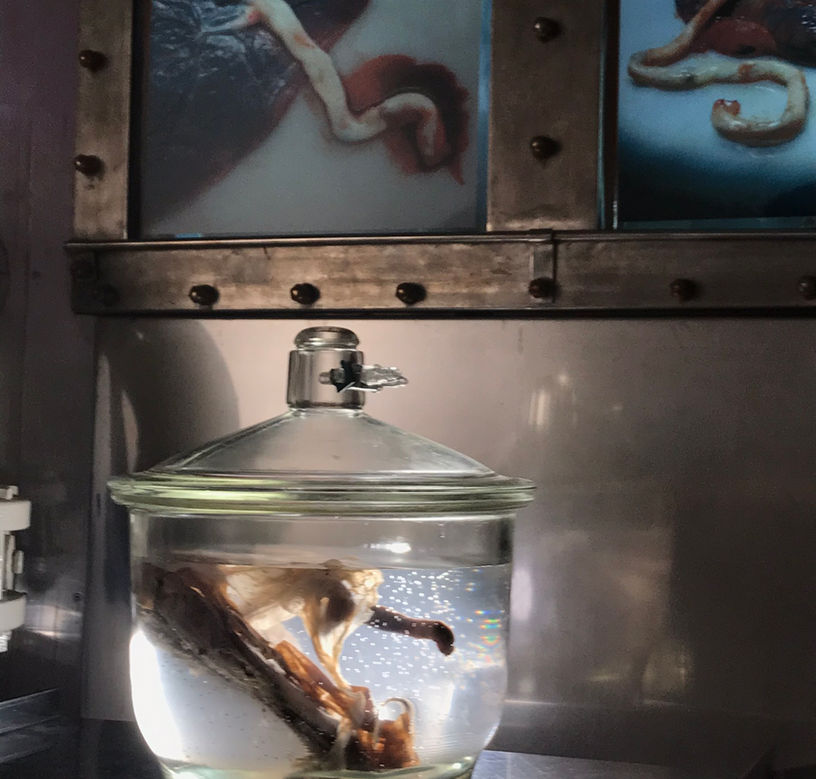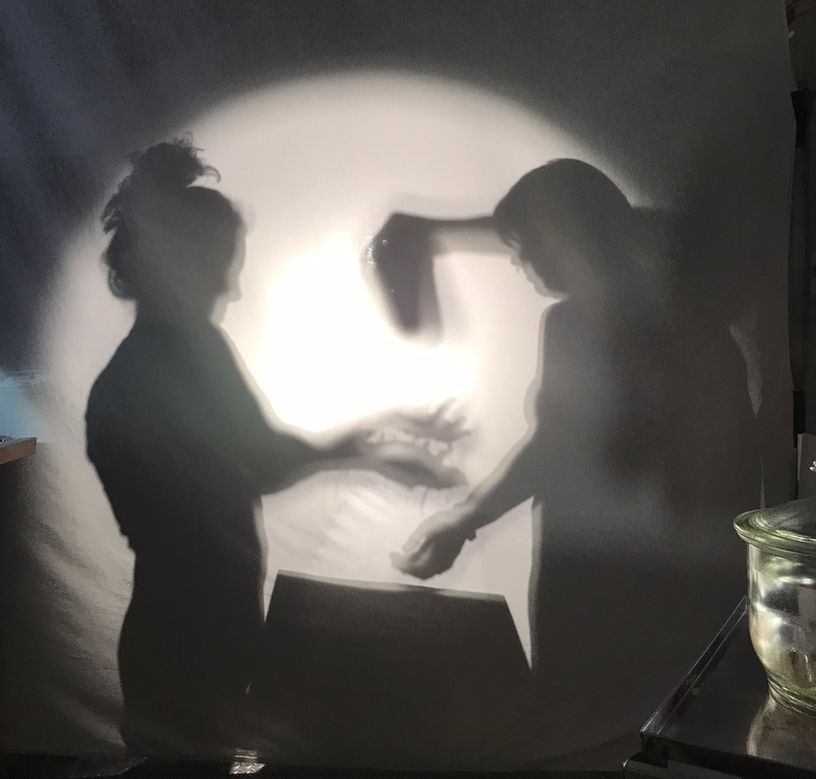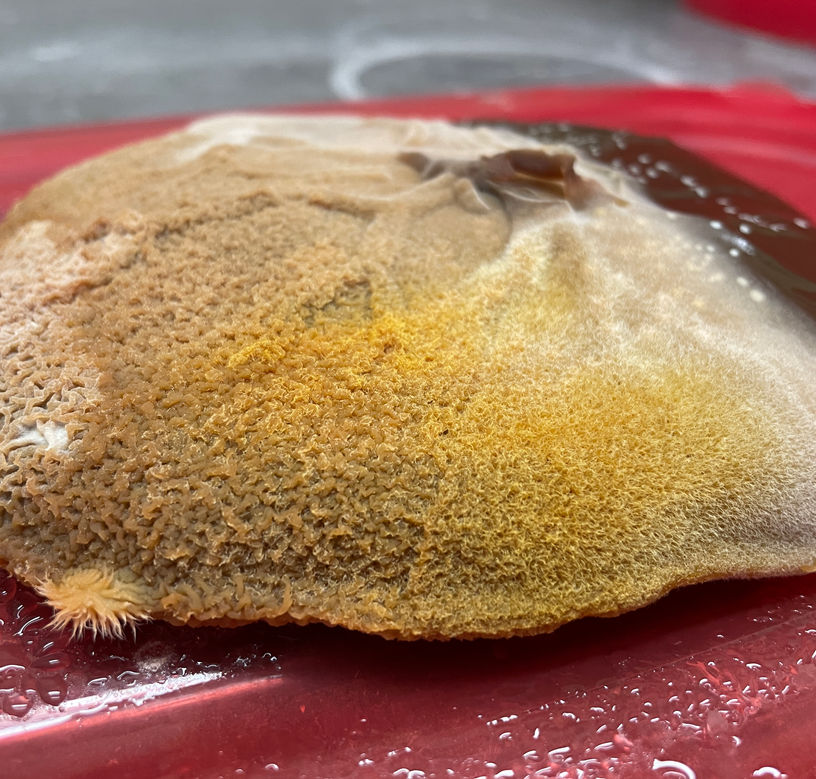CRISTIN MILLETT

Project Description
Ex-Utero explores human reproduction and probes the
biological and sociopolitical possibilities of ectogenesis, the development of the embryo outside the uterus. In the foreseeable future, artificial wombs may support life ex-vivo, and the placenta, a critical gestational organ, will become obsolete.
Using scientific protocols, we study the human placenta
to create multimedia installations, including visual
documentation of the scientific and artistic process, sculptural elements, and experimental
films. Ex-Utero will prompt questions and conversations
about the impact of ectogenesis, raise public awareness of current reproductive and neonatal technologies, and query the complicated future of human reproduction.
Background
What is the future of human reproduction? Reproductive biotechnologies are at the cusp of making ectogenesis a reality. Whether or not these scientific advances become commonplace, there is a need for the general public, and particularly women, to better understand how these developments will impact our future.

Correlation between reproductive science breakthroughs and the pregnancy timeline.
In vitro fertilization (IVF) revolutionized infertility
Synthetic mouse embryos growing in a mechanical uterus to the equivalent of
17 weeks human gestation
Premature lambs gestating in an
external uterine environment to
support full-term development
The placenta is integral for uterine gestation and its
lifespan is just 9 months.
When we bridge the six-week gap between these reproductive interventions, science will be able to replicate a nine-month pregnancy in an artificial womb. Within a generation, it may be possible to grow an embryo Ex-Utero.

Why the Placenta?
In an ectogenic future with mechanized gestation, the placenta will become a vestigial
organ. However, the placenta has unique biological traits, is of scientific importance, and cultural significance.
Research Institutions
Medicine
Cultural Beliefs
Biobanking
The placenta shows promise in regenerative medicine and tissue engineering research.
The placenta is used in ceremonial practice for the health of the mother and child.
Placental tissue is used in ocular surgeries and skin grafts.
The placenta and cord contain stem cells for genetically matched future treatments.
Team Bios
The Ex-Utero Collective includes an expanding group of artists, scientists, and researchers from across the globe engaged in interdisciplinary collaboration. The core members of the Collective are Dr. Ionat Zurr, Cynthia White, and Cristin Millett. We aim to explore the future of human reproduction through the examination of ectogenesis, the development of an embryo outside the uterus. In a future with mechanized gestation, the placenta will become obsolete. We examine the human placenta, which is an under-researched and invaluable biological resource, as a material for artistic production. The placenta was chosen because of its unique biological traits, scientific importance, and cultural significance in human reproduction. The work of the Ex-Utero Collective generates thoughtful and in-depth conversations about impending discoveries in reproductive technology.
Dr. Ionat Zurr https://tcaproject.net/
Dr. Ionat Zurr is an artist and academic. She is the Chair of the Fine Arts Discipline at the School of Design and a Researcher at SymbioticA, School of Human Sciences, at the University of Western Australia. Ionat is considered one of the founders in the field of Biological Arts. Her work was exhibited and collected by museums such as Pompidou Centre in Paris, MoMA NY, Mori Art Museum, NGV, GoMA, Yerba Buena Center for the Arts, San Francisco, Ars Electronica, National Art Museum of China and more. Zurr's ideas and projects reach beyond the confines of art; her work is often cited as inspiration to diverse areas such as new materials, textiles, design, architecture, ethics, fiction, and food.

Cynthia White https://sites.psu.edu/cynthiawhite/
Cynthia N. White is an award-winning filmmaker whose projects have broadcast on television, at film and arts festivals, and at conferences around the world. White’s work aims to further the understanding of, and create dialogues about, the intersection of art and science. Through visual narratives, she looks to bridge gaps in the public’s perception of science. Her work includes teaching courses about digital media, community health, and social justice at the Pennsylvania State University.

Cristin Millett https://www.cristin-millett.com/
As a transdisciplinary artist, Cristin Millett’s investigations of medicine are integral to her process. She examines the intersection of art and science, specifically sculptural processes and reproductive futures. Her sculptural objects and installations prompt a contemporary cultural critique of societal issues surrounding reproduction and gender identity. Cristin’s artwork has been widely exhibited, including at the Villa Strozzi, Florence; the International Museum of Surgical Science, Chicago; the Exploratorium, San Francisco; the Mütter Museum, Philadelphia; and the Moving Poets Novilla, Berlin. She is a Professor of Art at the Pennsylvania State University and was a 2020 Fulbright Senior Scholar at SymbioticA at the University of Western Australia.































